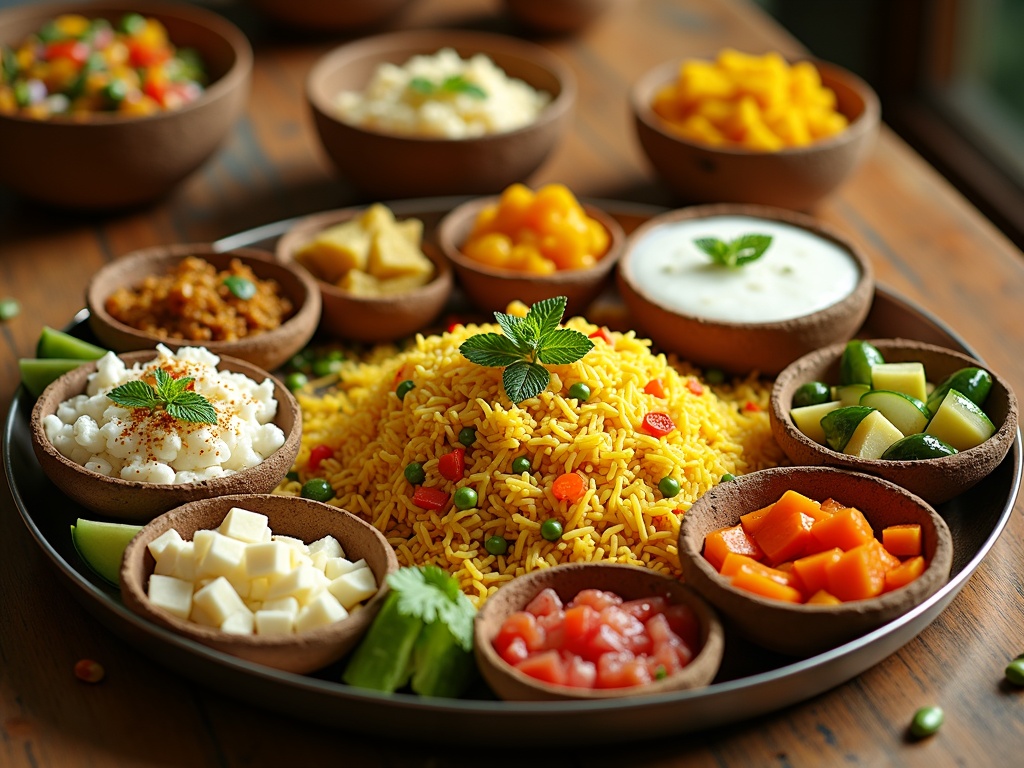Pulao recipe, a versatile and aromatic rice dish enjoyed across cultures worldwide, transforms basic ingredients into an exceptional meal through precise preparation and smart seasoning. This beloved dish fits into various cuisines with different combinations of spices, vegetables, and proteins, making it both a daily staple and a centerpiece for special occasions.
Find In This Article
Key Takeaways
- The ideal ratio for perfect pulao is 1 part rice to 1.5 parts water, ensuring each grain remains separate yet fully cooked.
- Basmati rice serves as the foundation, while whole spices like cumin seeds, cardamom pods, and cloves create the distinctive aromatic profile.
- Techniques like rinsing rice thoroughly, frying it in ghee before adding water, and using the “dum” method elevate pulao’s texture and flavor.
- A standard cup of pulao contains 220-300 calories with beneficial fiber and protein content that varies based on ingredients used.
- Complete your pulao meal with cooling accompaniments like raita, fresh salads, and pickles for a balanced dining experience.
“`html
A Beloved Rice Dish from Around the World
Rice holds an important place in global cuisine with consumption exceeding 500 million tons yearly. Among the countless ways to prepare this staple, pulao (also known as pilaf) stands out as one of the most beloved and versatile dishes across cultures.
Cultural Significance and Versatility
Pulao has earned its place at tables around the world thanks to its adaptable nature. I’ve found that this aromatic rice dish can be customized with various combinations of spices, vegetables, and proteins to suit different tastes and occasions. What makes pulao special is how it transforms humble rice into something extraordinary through careful preparation and thoughtful seasoning.
In many cultures, pulao is more than just a meal—it’s a center
“`
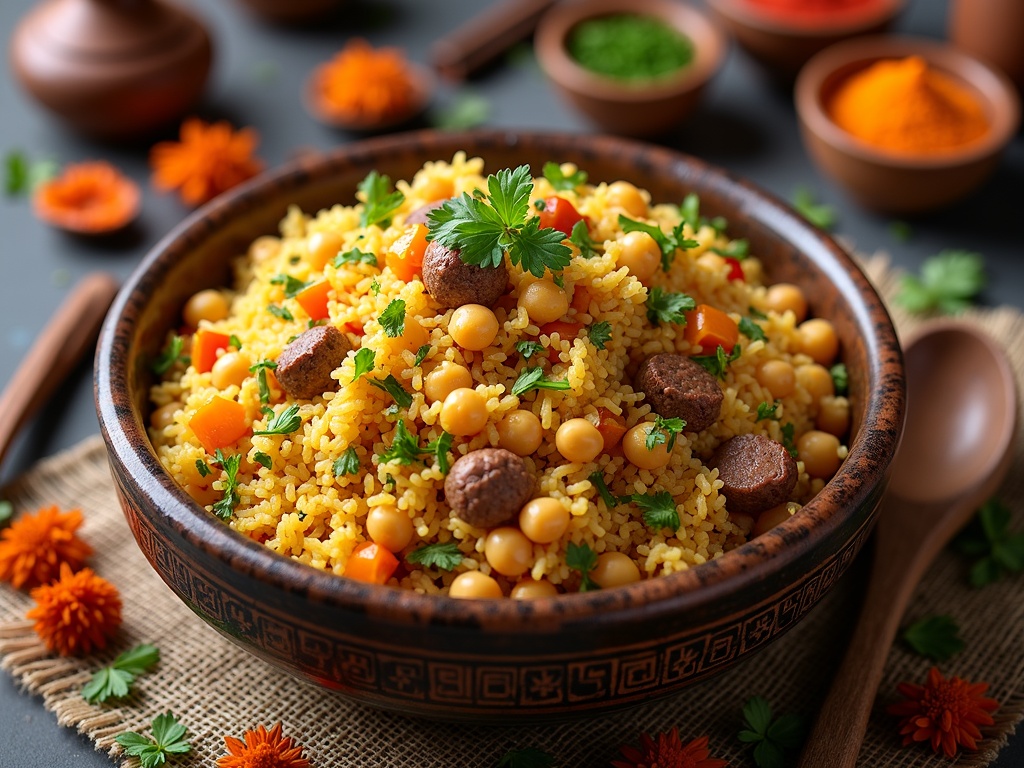
Perfect Your Pulao Ingredients and Ratios
Getting the perfect pulao starts with nailing the right ratio of ingredients. I’ve found that using 1 part rice to 1.5 parts water creates that ideal texture where each grain remains separate yet fully cooked. This precise measurement helps avoid the two common pitfalls: soggy rice or undercooked grains.
Core Ingredients That Build Flavor
Basmati rice serves as the foundation of any good pulao – its natural fragrance and long grains make it the ideal choice. I enhance this base with a careful selection of whole spices. Cumin seeds add a warm, earthy flavor when fried in oil at the beginning, while cardamom pods and cloves create those distinctive aromatic notes that make pulao so inviting.
For protein additions, I stick to 100-150g of meat per cup of rice to maintain the dish’s balance. This amount allows the meat to flavor the rice without overwhelming it. Vegetables like peas, carrots, and potatoes should be cut uniformly to ensure even cooking and proper distribution throughout the dish.
Regional Variations and Special Additions
Different regions put their own special touch on pulao through signature ingredients:
- Indian pulao often features saffron threads soaked in warm milk, creating a beautiful golden hue and distinct flavor
- Persian-style pulao incorporates dried fruits like raisins, apricots, and dates for sweet contrast
- Middle Eastern versions typically include turmeric, giving the rice a vibrant yellow color and subtle earthy notes
The beauty of pulao lies in its adaptability. I’ve discovered that adding a tablespoon of ghee during the final steaming stage creates an incredible richness that elevates the entire dish. For vegetarian versions, I replace meat with paneer or extra vegetables while maintaining the same spice profile.
When preparing special occasion pulao, I layer the ingredients rather than mixing them all at once. This technique, known as the “dum” method, allows flavors to meld while keeping the visual appeal of distinct layers.
Want to take your rice dishes to the next level? You might also enjoy learning how to make a perfect pilau rice with its distinct cooking method and flavor profile.
Master the Cooking Techniques
Pulao may seem complex at first, but I’ve broken down the process into simple steps that will have you making perfect rice every time. The total time investment is just 25-35 minutes – about 10-15 minutes for prep and 15-20 minutes for cooking.
Essential Techniques for Perfect Pulao
Starting with the right technique makes all the difference in your final dish. One key method I always use is frying the rice in ghee or oil before adding water. This extra step coats each grain with fat, preventing them from sticking together while adding incredible depth of flavor.
The traditional “Dum” method elevates pulao to new heights. This involves slow-cooking the rice in sealed layers for 30-40 minutes, allowing all the spices and aromatics to infuse deeply into each grain. I place a tight-fitting lid on my cooking pot and sometimes add a weight on top to ensure no steam escapes.
Your choice of cookware significantly impacts the final texture. I’ve found that a heavy-bottomed pot distributes heat evenly, preventing hot spots that can lead to uneven cooking. A pressure cooker is another excellent option that cuts cooking time while maintaining flavor.
The right utensils can protect your rice grains. I recommend using a wooden spoon when stirring, as it’s gentler than metal and helps prevent rice breakage. This small detail makes a big difference in the presentation of your final dish.
When making pulao, I pay special attention to the liquid-to-rice ratio. For most varieties, I use 1.5 to 2 cups of liquid for every cup of rice, depending on the rice type. Basmati typically needs less water than other varieties.
For more inspiration on rice dishes, check out this flavorful pilau rice recipe that uses similar techniques but with a different spice profile.
Essential Tips for Perfect Results
I’ve learned that creating delicious pulao isn’t just about throwing ingredients together. The secret lies in mastering a few crucial techniques that ensure your dish turns out perfect every time.
Preparation Techniques
Rinsing rice thoroughly is non-negotiable when making pulao. I always wash my basmati rice 3-4 times until the water runs clear to remove excess starch, which prevents the grains from becoming sticky. This simple step is the foundation for fluffy, separate grains in your final dish.
Water measurement makes a significant difference in pulao texture. For basmati rice, I use a 1:1.5 ratio (one cup rice to one and a half cups water), adjusting slightly based on whether I’m adding vegetables or meat. Too much water results in mushy rice, while too little leaves grains undercooked and hard.
Layering ingredients properly ensures even flavor distribution throughout your pulao. I start with a base of aromatic spices and onions, followed by meat (if using), then rice, and finally any delicate vegetables. This method allows each component to cook perfectly without any single element dominating the dish.
Cooking Process Management
Cooking time management is crucial for perfect pulao. I typically follow this timeline:
- 3-5 minutes for sautéing aromatics and spices
- 5-7 minutes for sealing meat (if using)
- 15-18 minutes for rice cooking
- 5 minutes resting time with heat off
The final resting period allows moisture to distribute evenly, resulting in perfectly cooked grains. I never skip this step as it makes a noticeable difference in texture.
Heat control requires attention throughout cooking. I start with medium-high heat for sautéing spices and onions, then reduce to medium-low once the rice and water are added. This gentle simmer allows for even cooking without burning the bottom layer.
For the authentic taste of traditional pulao, consider trying variations with different spice combinations. My pilau rice variations incorporate regional spice blends that transform this simple dish into something extraordinary.
By focusing on these fundamentals, I’ve managed to elevate my pulao from merely good to consistently exceptional. These techniques work whether you’re making a simple vegetable pulao or an elaborate meat version for special occasions.
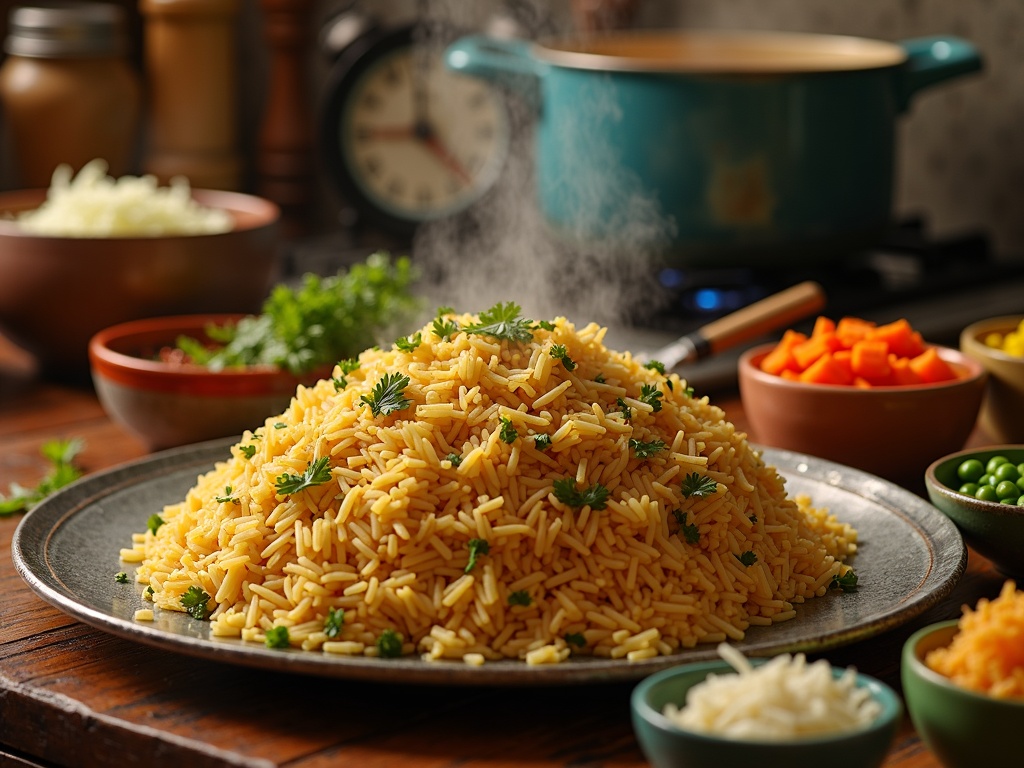
Health and Nutrition Facts
When I prepare pulao, I’m not just creating a delicious dish but also one that offers substantial nutritional benefits. This fragrant rice dish balances taste with nutrition, making it a smart addition to your meal plan.
Nutritional Breakdown
A single cup serving of pulao typically contains between 220-300 calories, depending on the specific ingredients used. The protein content ranges from 5-10g per serving, which contributes to muscle maintenance and overall satiety. The carbohydrate content falls between 40-60g per cup, providing necessary energy for daily activities.
One of the advantages of pulao is its fiber content. A standard serving provides approximately 15-20% of your daily fiber needs, supporting digestive health and helping you feel fuller longer. The healthy fats content varies significantly based on the type and amount of oil or ghee used in preparation.
Ingredient Benefits
The nutritional profile of pulao can be enhanced by the ingredients you choose to include:
- Basmati rice offers a lower glycemic index compared to other rice varieties
- Whole spices like cumin, cardamom, and cinnamon add antioxidant properties
- Vegetables increase vitamin and mineral content
- Protein sources like chicken or chickpeas boost the overall protein value
- Nuts and dried fruits add healthy fats and micronutrients
I can adjust the nutritional profile of my pilau rice by making thoughtful ingredient choices. Using brown basmati rice instead of white increases the fiber content. Reducing oil or using heart-healthy options like olive oil improves the fat profile. Adding more vegetables enhances the vitamin content while keeping calories in check.
The spices used in pulao don’t just add flavor—they bring their own health benefits. Turmeric contains curcumin, known for its anti-inflammatory properties. Cumin aids digestion, while cardamom can help with oral health and breath freshening.
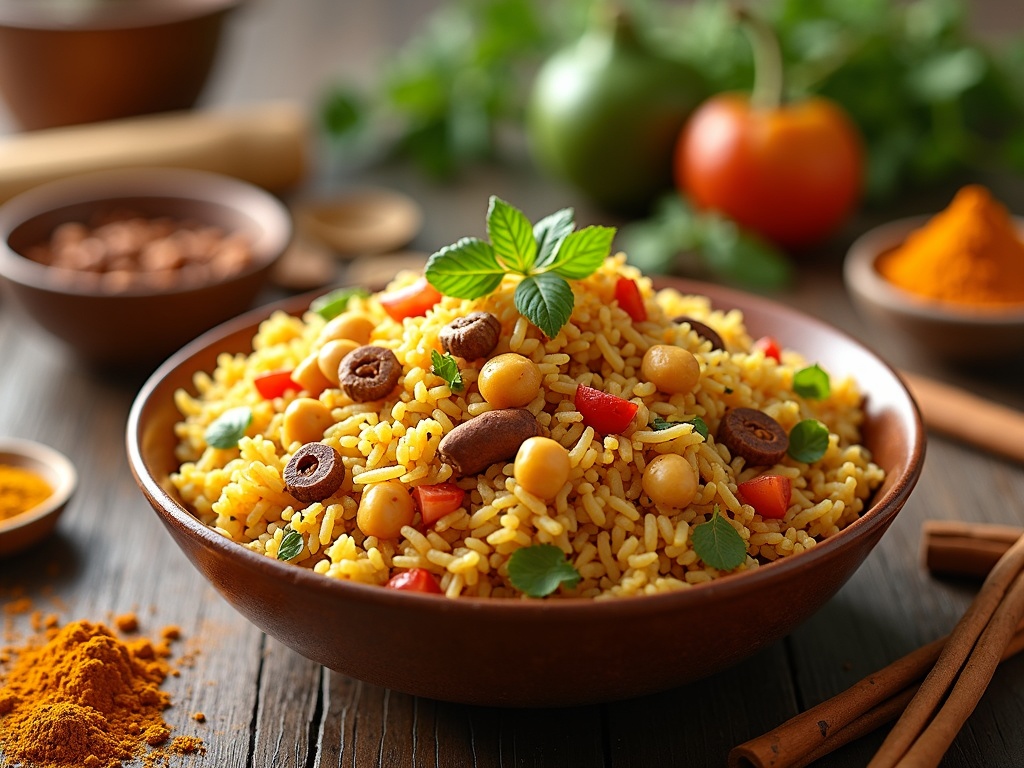
Complete Your Meal
The perfect pulao doesn’t stand alone—it thrives as part of a complete dining experience with complementary flavors and textures. I’ve discovered that pairing pulao with the right accompaniments can transform a simple meal into a memorable feast.
Cooling Accompaniments
A bowl of cooling raita is essential alongside a fragrant pulao. This yogurt-based sauce helps balance the spices in the rice while adding a creamy element to each bite. I prefer preparing a simple cucumber raita with grated cucumber, mint leaves, and a pinch of cumin powder stirred into thick yogurt. For variety, try adding grated carrots or pomegranate seeds to your raita.
Fresh salads provide a crisp contrast to the soft texture of pulao. Consider serving a simple kachumber salad with diced cucumbers, tomatoes, onions, and a squeeze of lemon juice. The raw vegetables offer a refreshing crunch that complements the aromatic rice perfectly. Adding a sprinkle of chaat masala to your salad brings an extra tangy dimension that pairs wonderfully with the pulao’s flavors.
Don’t forget to include pickles on your table! A small serving of mango pickle, lemon achaar, or mixed vegetable pickle adds intense bursts of flavor that enhance the overall meal experience. I find that even a small amount goes a long way in elevating each mouthful of pulao.
Beverage Pairings
The right beverage can make your pulao meal complete. A chilled glass of yogurt lassi serves as both refreshment and digestive aid. I prefer making mine with a hint of mint or rose water for an aromatic touch. For non-dairy options, consider serving:
- Fresh lime water with a touch of black salt
- Mango juice for a sweet contrast to savory pulao
- Jeera (cumin) water for digestive benefits
- Coconut water for a light, hydrating option
Traditional side dishes like dal (lentil curry) or a light vegetable curry also make excellent additions to your pulao spread. These provide protein and additional nutrients while complementing the pulao’s flavors rather than overwhelming them.
For an authentic touch, serve your complete meal on a thali (metal plate) with small katoris (bowls) for each accompaniment. This presentation not only looks beautiful but allows guests to combine flavors according to their preference with every bite of your delicious pulao rice.
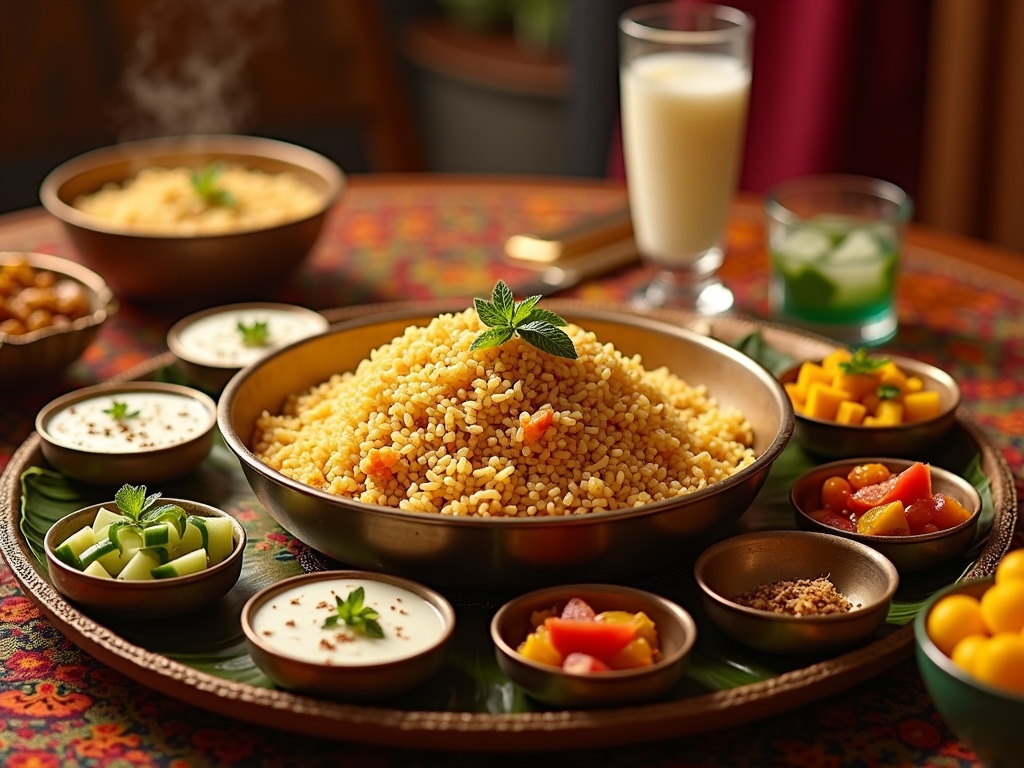
Sources:
“The Joy of Cooking” – Rombauer, Irma S.
“Indian Cookery” – Madhur Jaffrey
“Culinary Histories” – Andrew Smith

